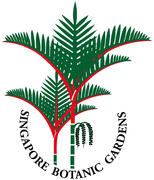MERREMIA Dennst. ex Endl., Gen. Pl. 1: 1403. 1841, nom. cons.
Skinneria Choisy, Mém. Soc. Phys. Genève 6: 487. 1834.
Spiranthera Bojer, Hort. Maurit. 226, p.p. 1837.
Tropics and warm temperate zones. map
Often confused with Ipomoea, which has pantoporate, spiny pollen, straight anthers and very few species with yellow corollas, and Operculina, which consistently has a fruit with a circumscissile lid that detaches first, leaving a brittle endocarp that shatters irregularly, and many species with sericeous-hairy midpetaline bands on the corolla. The distribution of hairs on the corolla is taxonomically important in Merremia; this is most easily discerned on mature flower buds.
The geus Merremia is almost certainly polyphyletic, both on morphological grounds as well as the molecular data available to date (Stefanovic et al., 2002). Revisionary study now underway will elucidate generic delimitation and systematic relationships in tribe Merremieae.
Ooststr., Blumea 3: 292. 1939.
Ooststr., Fl. Males. I, 4: 439. 1953.
Staples, Garden's Bull. Singapore 61: 483-522. 2010.
Songkhla & Khunwasi, Thai Forest Bull. (Bot.) 20: 30. 1993.
R.C. Fang & Staples in C.Y. Wu & P.H. Raven (eds.), Fl. China 16: 291. 1995.
Stefanovic, S. et al., Amer. J. Bot. 89: 1510-1522. 2002.


Add new comment